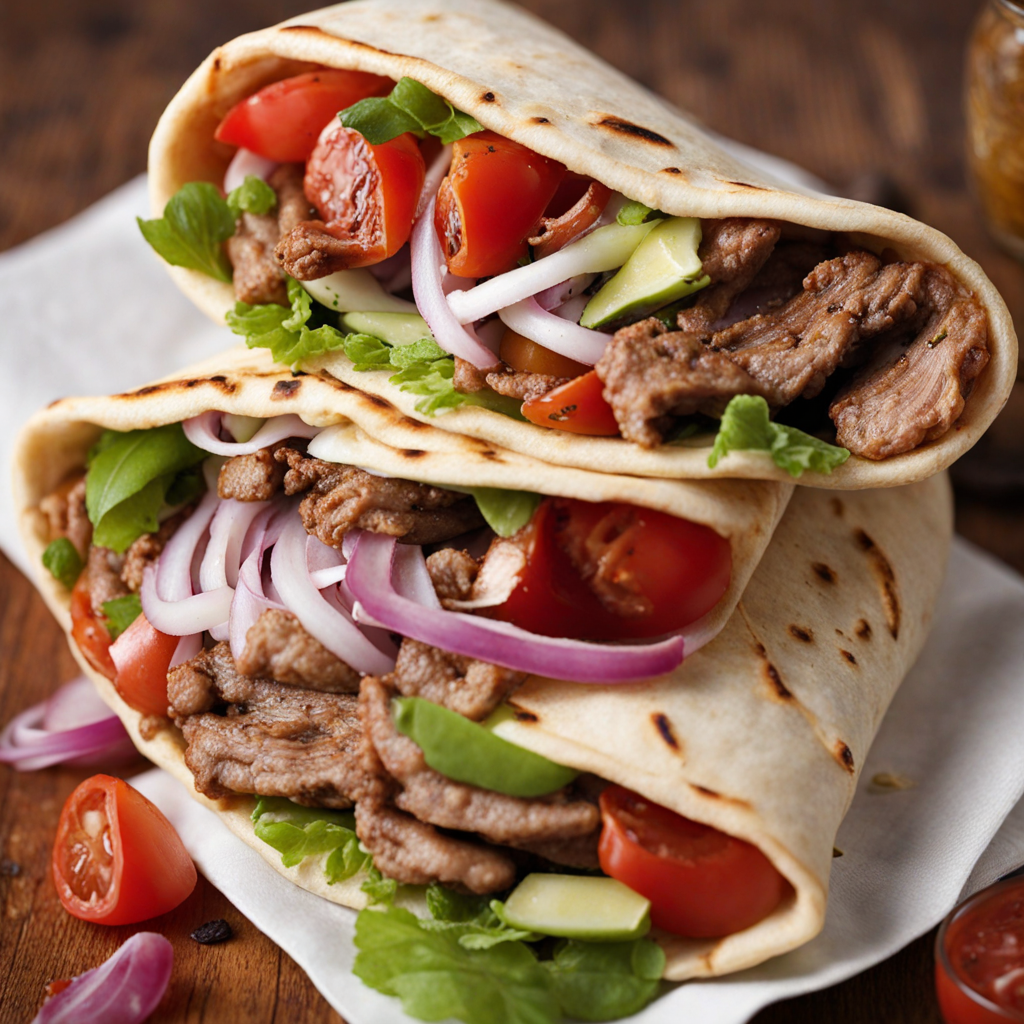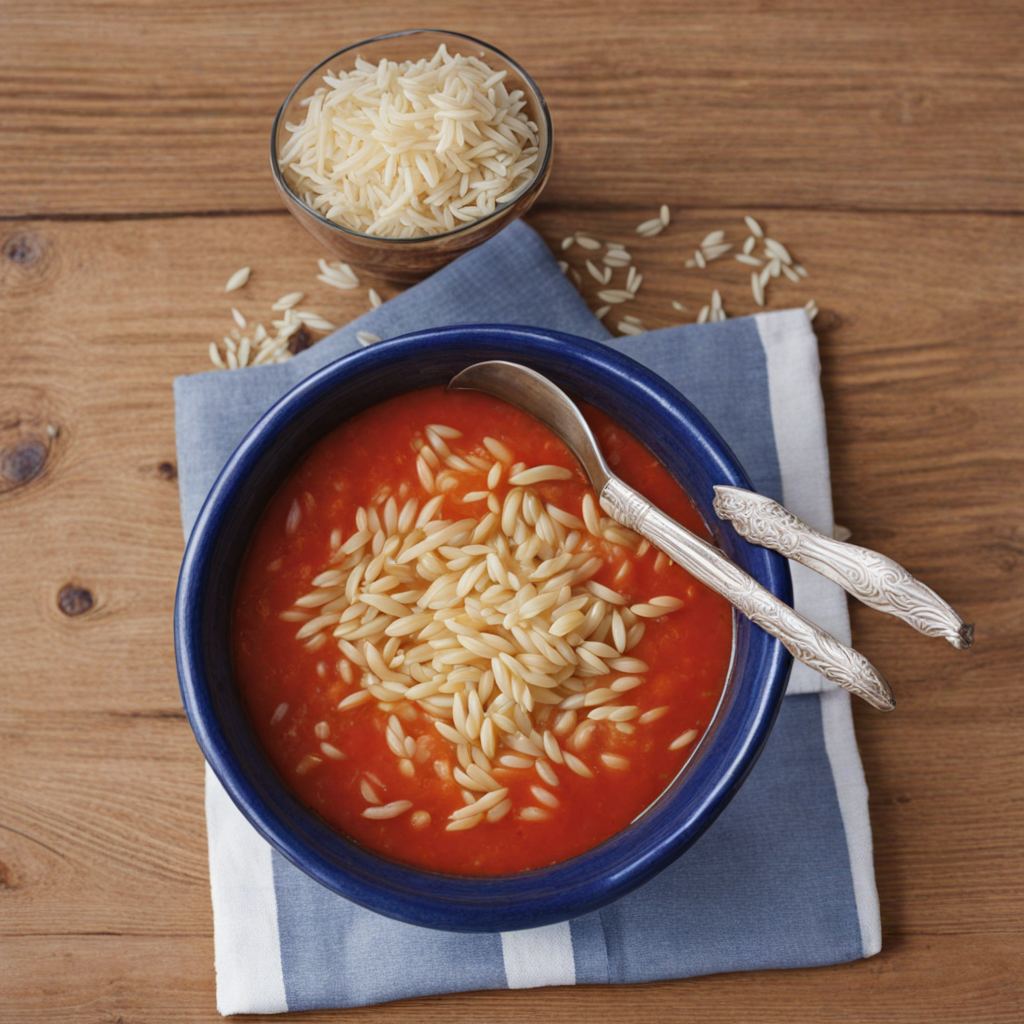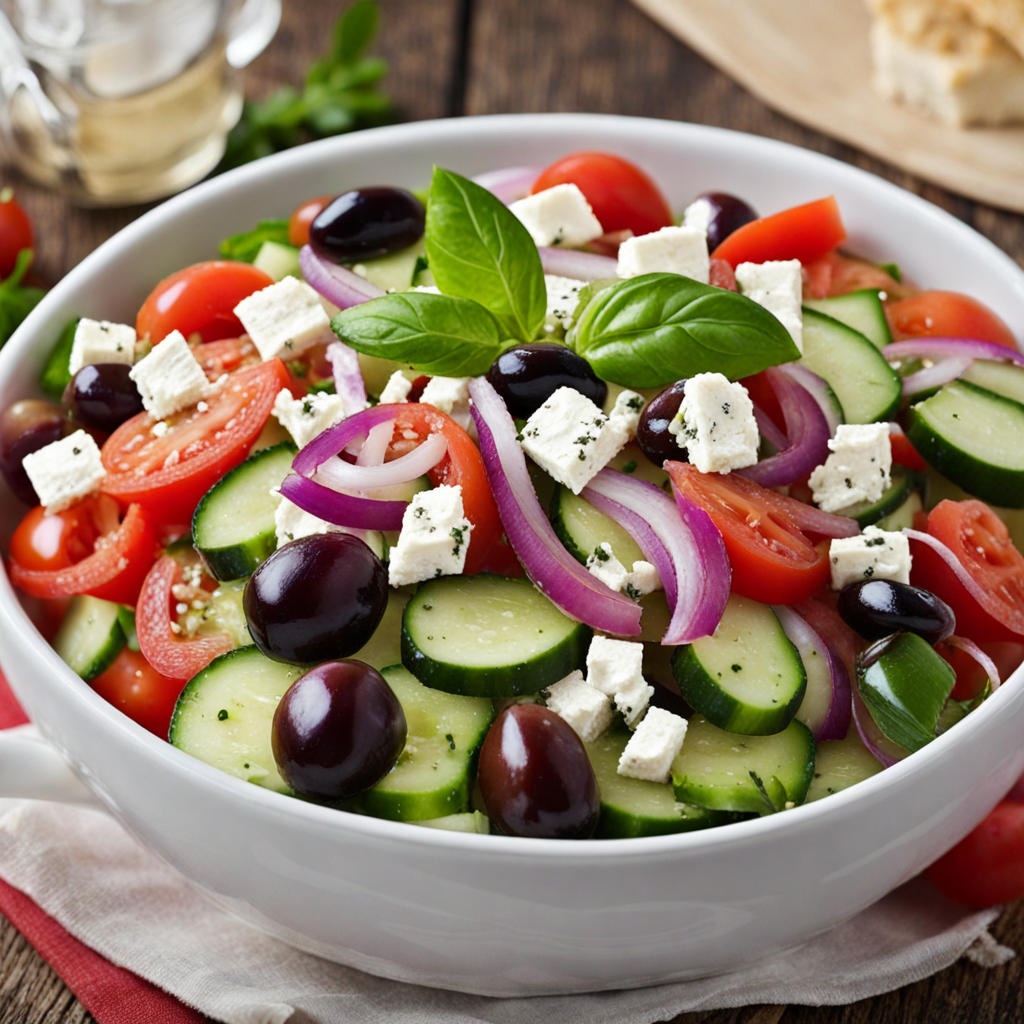Gyros
Gyros is a beloved Greek dish that embodies the vibrant flavors and rich culinary traditions of Greece. It typically consists of meat—usually pork, chicken, or lamb—cooked on a vertical rotisserie, which gives it a distinctive texture and taste. The meat is marinated in a blend of herbs and spices, often including oregano, garlic, and lemon, resulting in a tantalizing aroma and depth of flavor that makes each bite a delight. As the outer layer of meat is cooked to perfection, it is sliced off and served warm, often accompanied by fresh toppings that enhance its taste profile. Served in a warm, soft pita bread, gyros is often garnished with fresh vegetables such as tomatoes, onions, and lettuce, adding a refreshing crunch. The pièce de résistance is the creamy and tangy tzatziki sauce, made from yogurt, cucumber, garlic, and a hint of dill, which brings everything together beautifully. Each element in a gyros wrap works in harmony, creating a delicious balance of flavors and textures that is both satisfying and invigorating. Gyros is not just a meal; it's a culinary experience that invites you to savor the essence of Greek culture. Often enjoyed as street food or at casual dining establishments, it captures the spirit of communal eating and the joy of sharing good food with friends and family. Whether enjoyed on a busy day or savored during a leisurely meal, gyros offers a delicious and authentic taste of Greece that is sure to leave a lasting impression.
How It Became This Dish
The History of Γύρος: A Culinary Journey Through Greece The tantalizing scent of grilled meat, the rich aroma of spices, and the warm embrace of freshly baked pita bread—these are the sensory experiences that greet you when you encounter Γύρος (pronounced "yeeros"), one of Greece's most beloved and iconic street foods. This dish, which translates to "turn" in Greek, encapsulates a rich history and a cultural significance that extends far beyond its humble ingredients. #### Origins: A Culinary Evolution The roots of Γύρος can be traced back to ancient times, with its lineage often linked to the methods of cooking meat on skewers. The ancient Greeks enjoyed a variety of grilled meats, often prepared over open flames. However, it was during the Ottoman Empire's rule over Greece that the concept of cooking meat on a vertical rotisserie was introduced. This technique, known as "döner kebab" in Turkey, involved stacking marinated meat on a vertical spit, which would rotate and cook evenly, allowing the outer layers to crisp up while the inside remained juicy. The word "Γύρος" itself is derived from the Greek word for "turn," referring to the method of cooking the meat on a rotating vertical spit. This method of cooking became popular in various regions of the Mediterranean, but it was in Greece that it underwent a unique transformation, blending local flavors with Ottoman influences. #### Cultural Significance In the post-Ottoman period, particularly after the Balkan Wars and the subsequent establishment of the modern Greek state, Γύρος emerged as a symbol of national identity and culinary pride. Its accessibility and affordability made it a staple for the working class, while its delicious taste quickly garnered a broader appeal. Street vendors began to pop up in urban centers, particularly in Athens and Thessaloniki, serving the dish to eager customers from all walks of life. The cultural significance of Γύρος extends beyond mere sustenance; it is a social food, often shared among friends or consumed on the go. The dish embodies the spirit of Greek hospitality, where sharing food is an integral part of social interactions. Whether enjoyed at a late-night gathering after a night out or as a quick lunch during a busy workday, Γύρος has become a unifying dish that brings people together. #### Development Over Time Throughout the 20th century, Γύρος underwent significant developments, influenced by socio-economic changes and evolving culinary trends. The post-World War II era saw a surge in urbanization in Greece, leading to the emergence of numerous fast-food establishments. The increasing popularity of Γύρος led to the refinement of its preparation and presentation. Traditionally, Γύρος was made with pork, marinated in a blend of herbs and spices such as oregano, garlic, and lemon juice. However, as dietary preferences evolved, variations began to emerge. Chicken and beef versions of Γύρος gained popularity, catering to a diverse audience, including those who preferred different types of meat or had dietary restrictions. The introduction of tzatziki—a yogurt-based sauce with cucumber and garlic—further elevated the dish, adding a refreshing contrast to the savory meat. In the 1980s and 1990s, the globalization of cuisine began to influence Greek food culture. The allure of fast-casual dining and the incorporation of international flavors resulted in creative interpretations of Γύρος. Fusion dishes began to appear, blending traditional Greek ingredients with global culinary techniques, while still respecting the essence of the original dish. In recent years, there has been a growing interest in the quality and sourcing of ingredients. Many vendors now prioritize the use of locally sourced, organic meats and fresh produce, reflecting a broader trend towards sustainability and health-conscious eating. This evolution demonstrates the adaptability of Γύρος, as it embraces modern culinary practices while remaining rooted in its historical context. #### The Modern Era: A Global Phenomenon Today, Γύρος is not just a street food confined to the streets of Greece; it has become a global phenomenon. As Greek diaspora communities spread across the world, they took their culinary traditions with them. In cities like New York, Melbourne, and London, you can find dedicated establishments serving authentic Γύρος, introducing a new generation of food lovers to this delicious dish. Moreover, the rise of food trucks and pop-up restaurants has provided a platform for chefs to experiment with traditional recipes. Innovative spins on Γύρος can now be found, such as vegan versions using plant-based meats or unique flavor profiles incorporating international spices. These adaptations not only keep the dish relevant but also reflect the multicultural fabric of modern society. #### Conclusion: A Dish of Resilience and Adaptation The history of Γύρος is a testament to the resilience and adaptability of culinary traditions. From its ancient origins to its role in contemporary street food culture, Γύρος has remained a beloved staple in Greek cuisine. It symbolizes the blending of cultures, the celebration of community, and the joy of sharing food. As we savor a warm pita filled with succulent meat, fresh vegetables, and tangy tzatziki, we partake in a culinary legacy that has evolved over centuries. Γύρος is more than just food; it is a snapshot of history, a reflection of cultural identity, and a delicious reminder of the power of food to bring people together. Whether you are indulging in it at a bustling street vendor in Athens or enjoying it at a trendy eatery in New York, Γύρος continues to captivate palates and hearts around the world, embodying the spirit of Greece in every bite.
You may like
Discover local flavors from Greece







